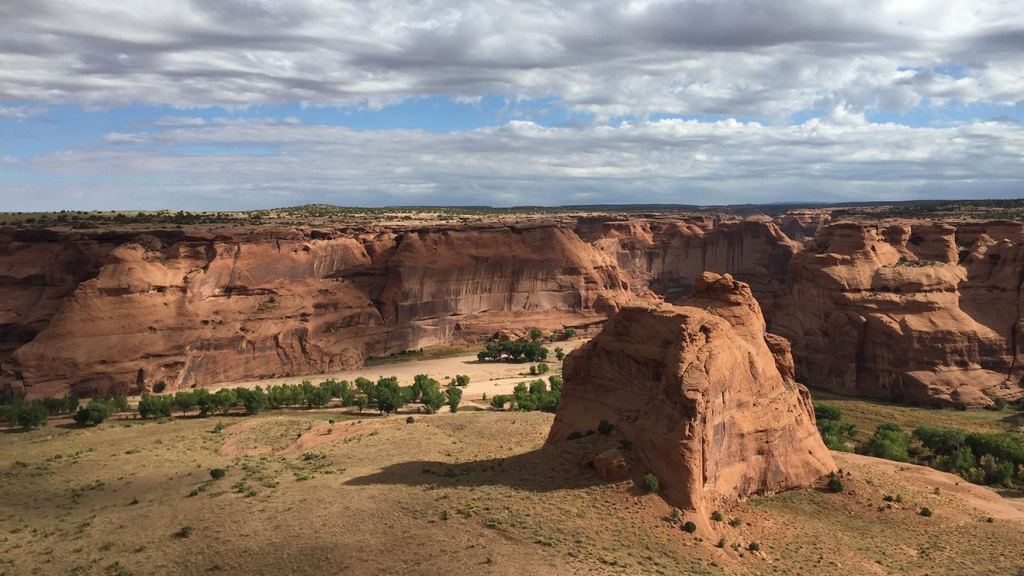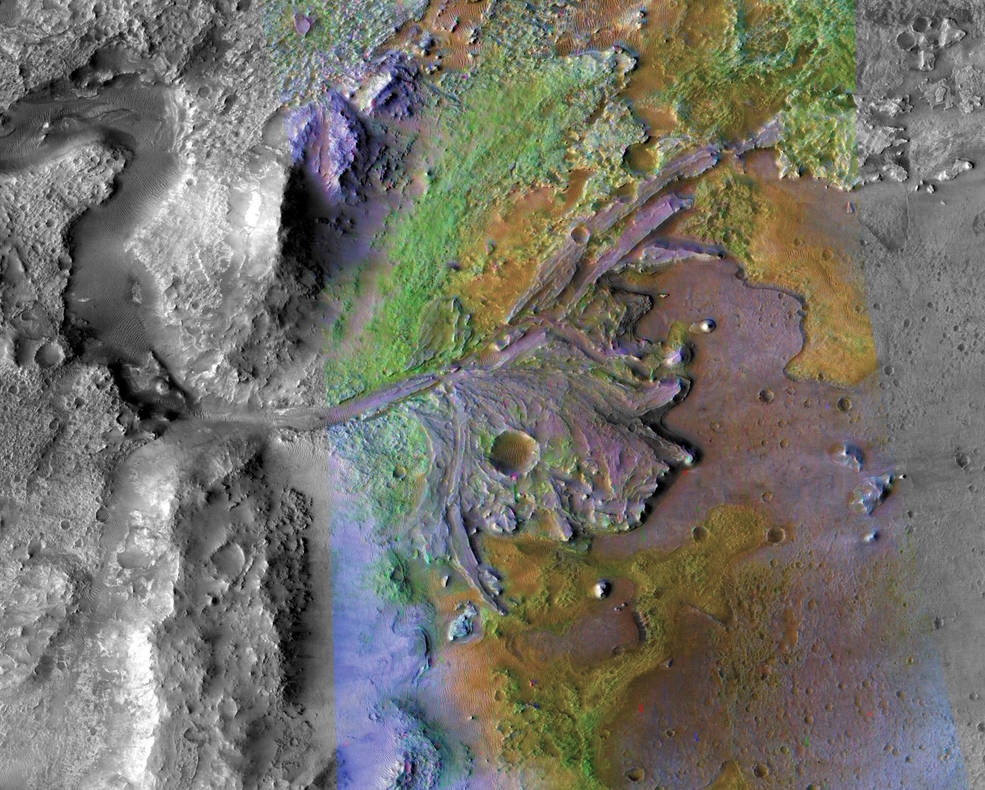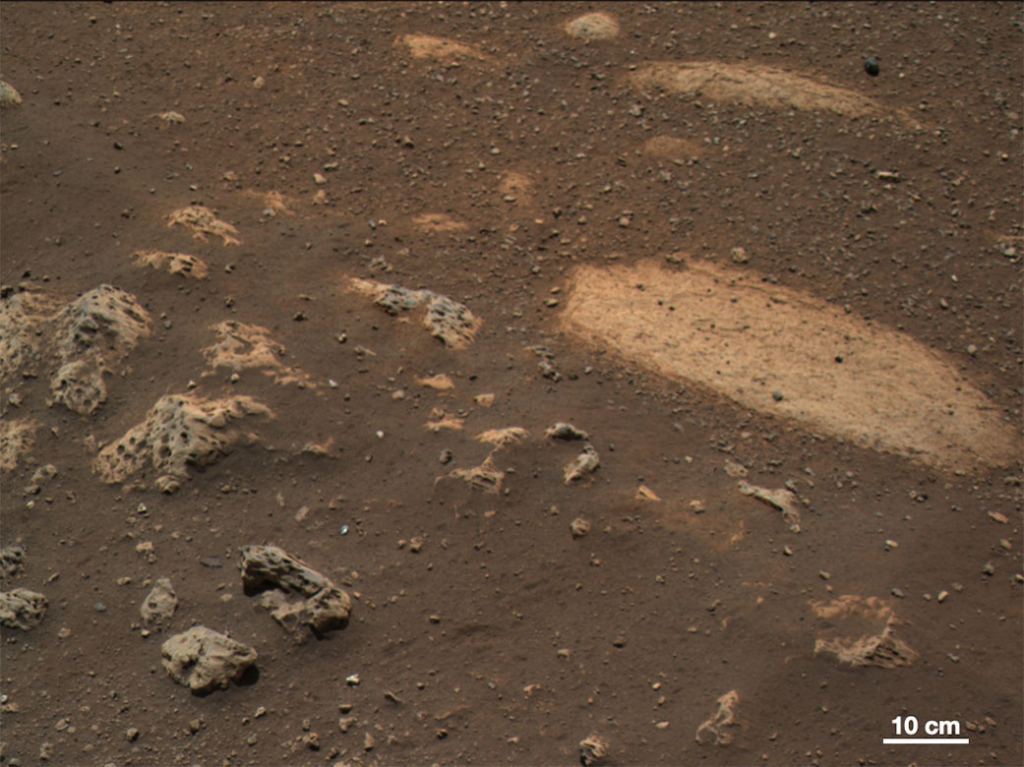On Feb. 18th, 2021, after spending six months in transit, the Perseverance rover landed in the Jezero Crater on Mars. By March 4th, it began driving short distances and calibrating its instruments in preparation for all the science operations it will conduct. Most recently, Perseverance began studying its first scientific target, a rock that has been named " Máaz " - the Navajo word for "Mars."
This feature is one of many objects of scientific interest in the Jezero Crater that are being given names from the Navajo language. The process is overseen by the Perseverance mission team in collaboration with the Navajo Nation Office of the President and Vice President. This is in keeping with NASA's tradition of giving features nicknames so that the mission team (which can number in the thousands) has a common name for them.
Recently, the Perseverance team named the rover's landing site the "Octavia E. Butler Landing" in honor of the late and esteemed science fiction author who passed away in 2006. Similarly, the Curiosity rover's landing site in the Gale Crater was named Bradbury Landing in honor of Ray Bradbury, the famed science fiction author who is perhaps best known for writing The Martian Chronicles.
In this case, the decision is part of a larger effort where the rover's landing site was divided into four quadrangles (or "quads"). Each quad measures about 2.6 km2(1 square mile) in size and is named after a national park or nature preserve on Earth with similar geology. The quad where Perseverance landed is named for Arizona's Tséyi (Canyon de Chelly) National Monument, located in the heart of the Navajo Nation.
One of the engineers on the mission team is Aaron Yazzie of NASA's Jet Propulsion Laboratory, who is himself Navajo (or Diné). Through Yazzie, NASA south the permission and cooperation of the Navajo Nation to name new features on Mars. In response, Jonathan Nez and Myron Lizer (the President and VP of the Navajo Nation, respectively) and their advisors compiled a list of words and made them available to the rover's team.
For instance, Perseverance 's name was translated to "Ha'anhóni," while words like bidziil ("strength") and ho? nil?? ("respect") were also emphasized as possible names for features. Other terms were inspired by terrain that has already been imaged by the rover, such as *tséwózí bee hazhmeezh*, which translates to "rolling rows of pebbles, like waves." As Navajo Nation President Jonathan Nez said in a NASA press release:
"The partnership that the Nez-Lizer Administration has built with NASA will help to revitalize our Navajo language. We hope that having our language used in the Perseverance mission will inspire more of our young Navajo people to understand the importance and the significance of learning our language. Our words were used to help win World War II, and now we are helping to navigate and learn more about the planet Mars."
At present, the Perseverance team has a list of 50 names to start, but the team will continue to work with the Navajo Nation to include more names for features as the rover continues to identify them. "This fateful landing on Mars has created a special opportunity to inspire Navajo youth not just through amazing scientific and engineering feats, but also through the inclusion of our language in such a meaningful way," added Yazzle.
One of the biggest challenges has been adapting Navajo script in such a way that Perseverance's systems are able to recognize it. In order to convey the unique pronunciation of Navajo words, special accents are included (which the rover's computerized language does not recognize). For now, the team is avoiding complications by simply using English letters without special accents or punctuations.
However, Yazzie also indicated that the team will continue to work to find ways to convey the proper intonations. Said Nez:
"We are very proud of one of our very own, Aaron Yazzie, who is playing a vital role in NASA’s Mars 2020 Perseverance Mission. We are excited for the NASA team and for Aaron and we see him as being a great role model who will inspire more interest in the STEM fields of study and hopefully inspire more of our young people to pursue STEM careers to make even greater impacts and contributions just as Aaron is doing. As the mission continues, we offer our prayers for continued success."
Katie Stack Morgan, the Deputy Project Scientist of the *PerseveranceI mission* at JPL, added that scientists on the team have embraced the opportunity to learn Navajo words and their meaning. "This partnership is encouraging the rover's science team to be more thoughtful about the names being considered for features on Mars – what they mean both geologically and to people on Earth," she said.
In the near future, the rover will be running more tests to calibrate its advanced suite of instruments. These will be relied on when Perseverance examines Máaz's composition and what it can tell us about the history of the Jezero Crater. The Ingenuity Mars Helicopter will also be making another experimental test flight to test its systems and capabilities.
The types of discoveries Perseverance will allow for have scientists all over the world eagerly awaiting the rovers scientific returns!
Further Reading: NASA
 Universe Today
Universe Today



